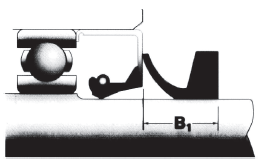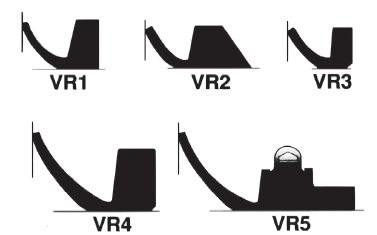V-rings (also known as V-seals) are all-rubber
seals that are installed directly onto a
shaft to seal against a housing face, a bearing, or
the back of a
shaft seal. Offering simplicity and versatility,
V-rings are chiefly used to protect bearings or other
parts from contamination, as well as to retain grease.
V-rings can also function effectively in dry
applications with very low torque.

V-ring consists of three parts: a body, a conical
self-adjusting lip, and a hinge. In service, the
elastic body of the seal rotates with the shaft
while the adjustable lip maintains a
dynamic seal in axial contact with a perpendicular
counter face. V-rings offer many advantages. V-ring
tolerates greater radial variation than a traditional
shaft seal. V-ring also tolerates greater
shaft-to-bore misalignment (STBM). A V-ring also
tolerates greater
dynamic run-out (DRO) than a standard shaft seal.
And a V-ring can function as both a seal and a
slinger. V-rings are also less expensive than
traditional shaft seals.
Another important advantage of the V-ring is its
elasticity. A V-ring can be stretched during
installation onto a shaft without disassembly of the
unit, and one size V-ring can be used on a range of
shaft sizes in either metric or English dimensions. A
commonly used V-ring material is wear-resistant
nitrile (-40° F to 225° F). V-rings made of
fluoroelastomers are typical in
applications with higher temperatures (-20° F to 300°
F).
V-rings are often used as supplemental seals in
conjunction with traditional shaft seals. Studies have
shown that a V-ring paired with a
single lip shaft seal excludes contaminants better
than a shaft seal with a conventional
radial dirt lip.
V-rings profile types:



